Tom Crewe in The Guardian:
 Oscar Wilde always imposed. Meeting him in 1892, the French writer Jules Renard reported: “He offers you a cigarette, but selects it himself. He does not walk around a table: he moves the table out of the way … He is enormous, and carries an enormous cane.” The affectations of dress and manner; the extraordinary, magnetic talk; the flourished epigrams; the startling, needling essays, stories and plays – all these were impositions. They were how Wilde forced himself on the attention of the world, made himself notorious, and then famous. And in the ugliness and despair of his downfall – in 1895 he was found guilty of homosexual offences (acts of “gross indecency”) and sentenced to two years of hard labour – he imposed himself again: on the contemporary and historical imagination. But also on the lives of gay men, for 128 years and counting.
Oscar Wilde always imposed. Meeting him in 1892, the French writer Jules Renard reported: “He offers you a cigarette, but selects it himself. He does not walk around a table: he moves the table out of the way … He is enormous, and carries an enormous cane.” The affectations of dress and manner; the extraordinary, magnetic talk; the flourished epigrams; the startling, needling essays, stories and plays – all these were impositions. They were how Wilde forced himself on the attention of the world, made himself notorious, and then famous. And in the ugliness and despair of his downfall – in 1895 he was found guilty of homosexual offences (acts of “gross indecency”) and sentenced to two years of hard labour – he imposed himself again: on the contemporary and historical imagination. But also on the lives of gay men, for 128 years and counting.
There is a well-known passage in EM Forster’s Maurice, written in 1913 but not published until 1971, after Forster’s death. Maurice, who has “failed to kill lust single-handed”, resolves to consult a doctor about his problem. “I am an unspeakable,” he confesses, “of the Oscar Wilde sort.” What is “unspeakable” is immediately revealed by the use of Wilde’s name: that Maurice is homosexual. To be an “Oscar Wilde sort” was to be gay – but was it to be anything like Oscar Wilde?
More here.

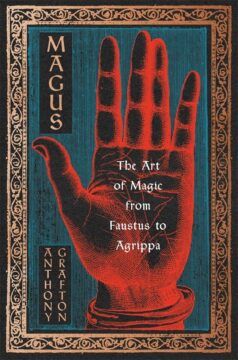 I
I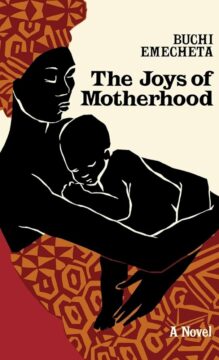 Lagos is an experience of a lifetime. The city will enchant and wreck you. The bedlam. The 15-minute journeys that stretch to five hours because of traffic jams. The multitudes everywhere you turn, each individual fizzing with hope and energy and stories, each unfazed by the maladies of living here — crumbling infrastructure, an oppressive kleptocratic government, the daily whiff of disasters brewing.
Lagos is an experience of a lifetime. The city will enchant and wreck you. The bedlam. The 15-minute journeys that stretch to five hours because of traffic jams. The multitudes everywhere you turn, each individual fizzing with hope and energy and stories, each unfazed by the maladies of living here — crumbling infrastructure, an oppressive kleptocratic government, the daily whiff of disasters brewing. Nuclear weapons
Nuclear weapons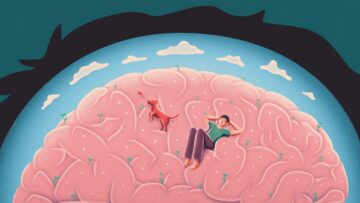 But is your brain active even when you’re zoning out on the couch?
But is your brain active even when you’re zoning out on the couch?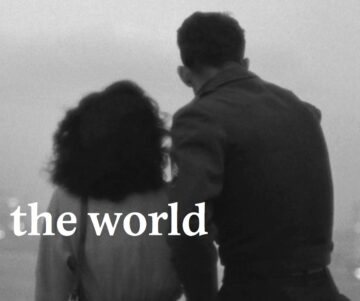 When used properly, metaphors enhance speech. But correctly dosing the metaphorical spice in the dish of language is no easy task. They ‘must not be far-fetched, or they will be difficult to grasp, nor obvious, or they will have no effect’, as Aristotle already noted nearly 2,500 years ago. For this reason, artists – those skilled enhancers of experience – are generally thought to be the expert users of metaphors, poets and writers in particular.
When used properly, metaphors enhance speech. But correctly dosing the metaphorical spice in the dish of language is no easy task. They ‘must not be far-fetched, or they will be difficult to grasp, nor obvious, or they will have no effect’, as Aristotle already noted nearly 2,500 years ago. For this reason, artists – those skilled enhancers of experience – are generally thought to be the expert users of metaphors, poets and writers in particular.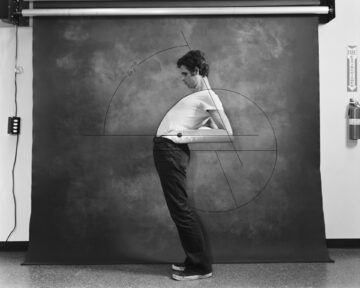 Robert Cumming, a pioneering wizard of West Coast photo-conceptualism, died in 2021, at the age of seventy-eight. He achieved brief semi-stardom in the nineteen-eighties, when he mounted solo exhibitions at both moma and the Whitney, but he failed to achieve the kind of lasting fame accorded to his close contemporaries in the L.A. scene, like Ed Ruscha, the master of deadpan Pop, or John Baldessari, Ruscha’s wackier counterpart, or even Cumming’s close friend and studio-mate William Wegman. Posthumously, though, Cumming has been experiencing a much deserved mini-revival. At Jean-Kenta Gauthier gallery, in Paris, a recent three-part series of exhibitions amounted to something like a retrospective. A new book, “Very Pictorial Conceptual Art,” edited by the writer and curator David Campany, collects Cumming’s photographic work from 1968 until 1980. The filmmaker Noah Rosenberg is making a feature-length documentary on Cumming, “On Closer Inspection,” a truncated version of which screened during this year’s Paris Photo art fair.
Robert Cumming, a pioneering wizard of West Coast photo-conceptualism, died in 2021, at the age of seventy-eight. He achieved brief semi-stardom in the nineteen-eighties, when he mounted solo exhibitions at both moma and the Whitney, but he failed to achieve the kind of lasting fame accorded to his close contemporaries in the L.A. scene, like Ed Ruscha, the master of deadpan Pop, or John Baldessari, Ruscha’s wackier counterpart, or even Cumming’s close friend and studio-mate William Wegman. Posthumously, though, Cumming has been experiencing a much deserved mini-revival. At Jean-Kenta Gauthier gallery, in Paris, a recent three-part series of exhibitions amounted to something like a retrospective. A new book, “Very Pictorial Conceptual Art,” edited by the writer and curator David Campany, collects Cumming’s photographic work from 1968 until 1980. The filmmaker Noah Rosenberg is making a feature-length documentary on Cumming, “On Closer Inspection,” a truncated version of which screened during this year’s Paris Photo art fair. For much of the late 19th and early 20th centuries, Black athletes were forbidden from competing as professional athletes. But trailblazers like Jackie Robinson and Althea Gibson slowly chipped away at color barriers in American sports and opened up the floodgates for today’s stars to thrive.
For much of the late 19th and early 20th centuries, Black athletes were forbidden from competing as professional athletes. But trailblazers like Jackie Robinson and Althea Gibson slowly chipped away at color barriers in American sports and opened up the floodgates for today’s stars to thrive. Robert Irwin died a few months ago. He was 95 years old, so this was not a great tragedy. I didn’t know the man personally, but I have the sense that he lived a good and fulfilled life. He was quite famous within the more or less refined corners of the international artworld. He’ll probably always be most associated with the so-called Light and Space Movement that emerged in California, more properly southern California, in the late 1960s. Judy Chicago also did important works from within the Light and Space sensibility. James Turrell. Mary Corse. If these names mean anything to you. Quite fine if they don’t.
Robert Irwin died a few months ago. He was 95 years old, so this was not a great tragedy. I didn’t know the man personally, but I have the sense that he lived a good and fulfilled life. He was quite famous within the more or less refined corners of the international artworld. He’ll probably always be most associated with the so-called Light and Space Movement that emerged in California, more properly southern California, in the late 1960s. Judy Chicago also did important works from within the Light and Space sensibility. James Turrell. Mary Corse. If these names mean anything to you. Quite fine if they don’t. On Sunday, a report from the
On Sunday, a report from the  I first came across Friedrich Schiller and his work in the aftermath of the revolution in Zanzibar in January 1964. Among the victorious insurgents was a left-leaning group called the Umma Party. There is a long tale to be told about the formation of this group and its fate. In the early 1960s, members of the Umma, right under the eyes of the British colonial administration, went off to Cuba for military training. The connection with Cuba meant that the Umma had friends and supporters in the Soviet bloc of nations. After the revolution, the group had significant influence in the new power-balance in the government. It was no doubt through the influence of the Umma faction, as well as through expediency, that the post-revolutionary government invited or accepted the fraternal assistance of the ‘socialist’ group of nations.
I first came across Friedrich Schiller and his work in the aftermath of the revolution in Zanzibar in January 1964. Among the victorious insurgents was a left-leaning group called the Umma Party. There is a long tale to be told about the formation of this group and its fate. In the early 1960s, members of the Umma, right under the eyes of the British colonial administration, went off to Cuba for military training. The connection with Cuba meant that the Umma had friends and supporters in the Soviet bloc of nations. After the revolution, the group had significant influence in the new power-balance in the government. It was no doubt through the influence of the Umma faction, as well as through expediency, that the post-revolutionary government invited or accepted the fraternal assistance of the ‘socialist’ group of nations. Cancer cells
Cancer cells On this page, you will be introduced to 15 black authors that will have their names forever ingrained in history and their books read by millions worldwide.
On this page, you will be introduced to 15 black authors that will have their names forever ingrained in history and their books read by millions worldwide.